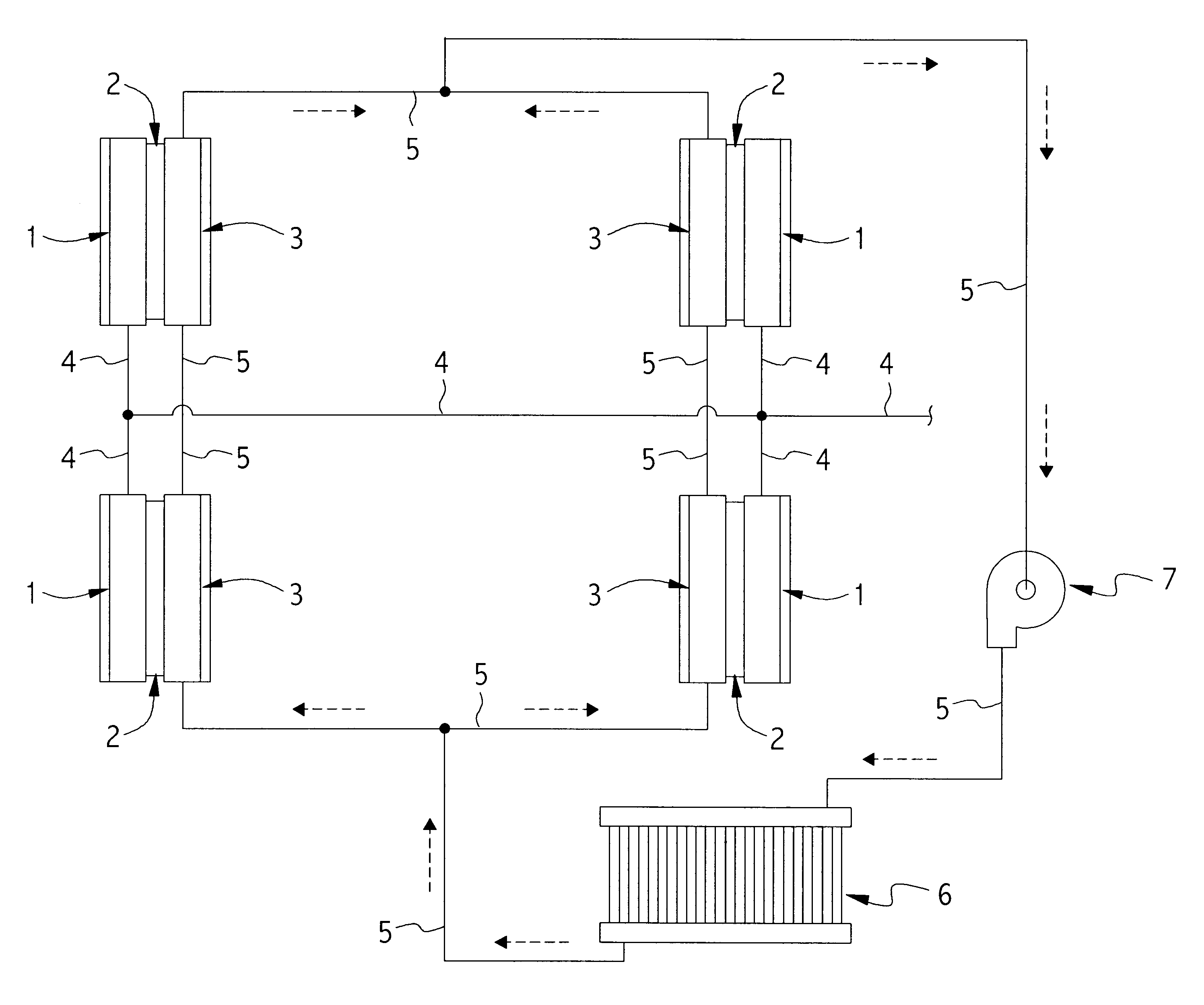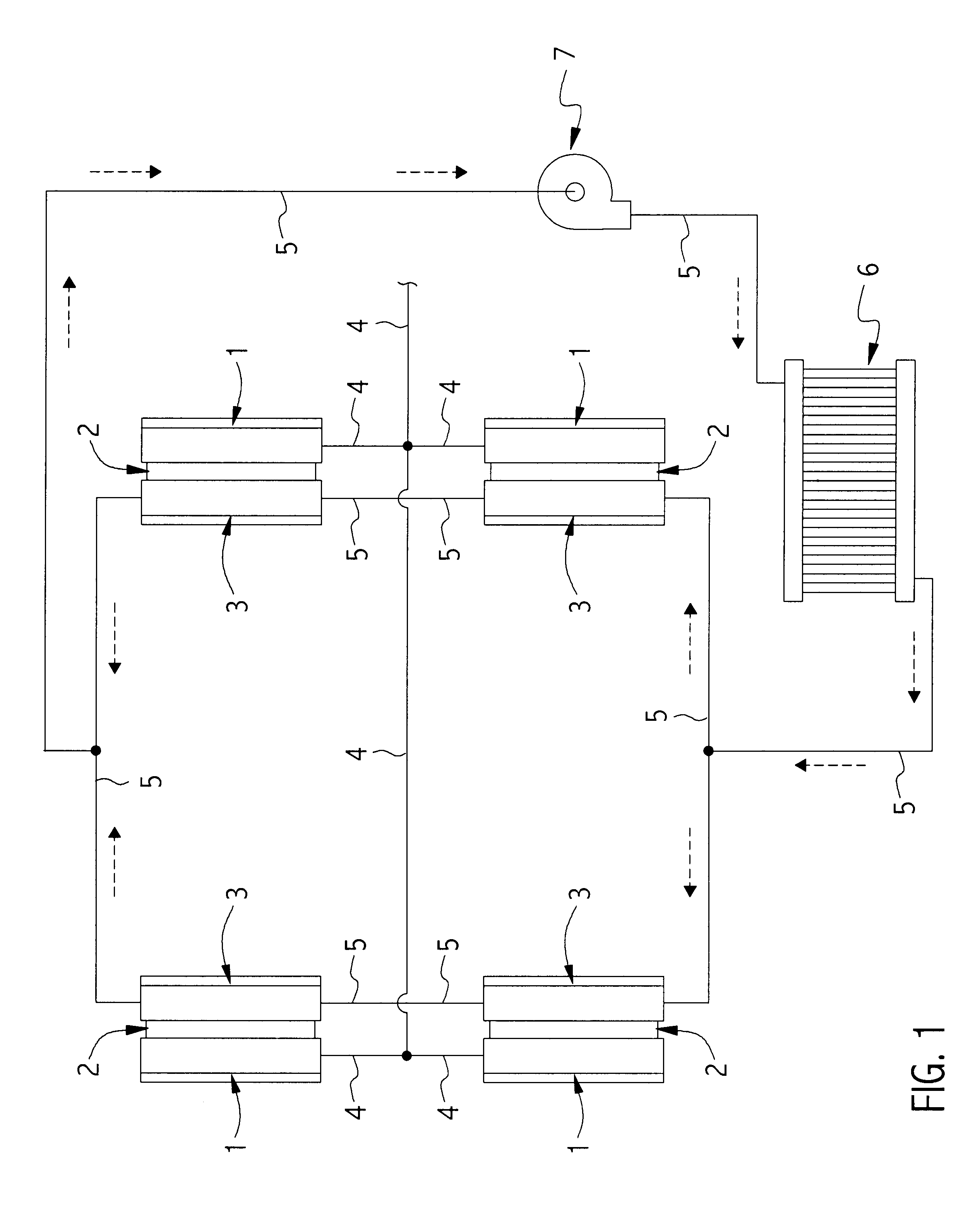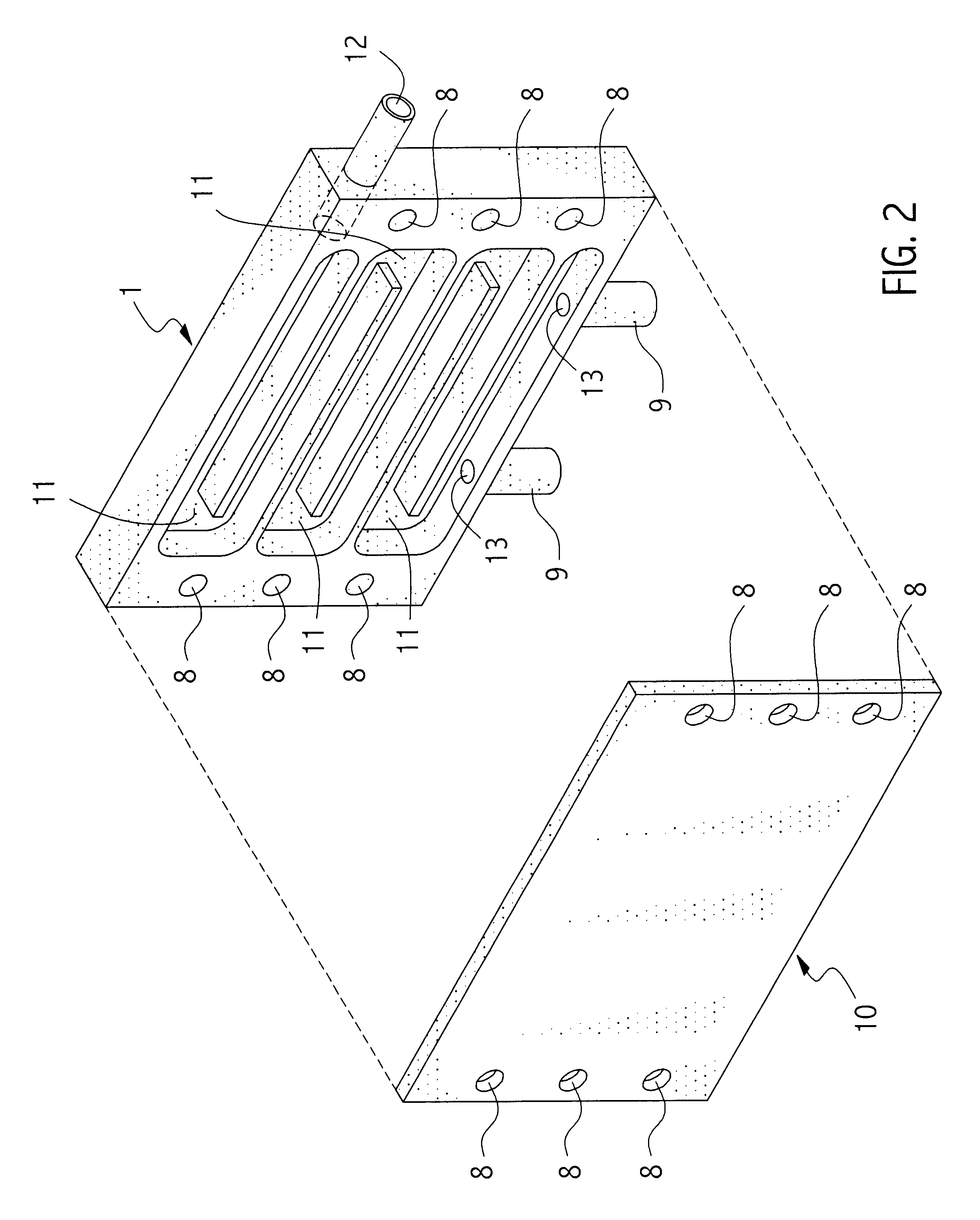Apparatus for cooling fuel and fuel delivery components
a technology for cooling fuel and components, applied in the direction of combustion engines, combustion-air/fuel-air treatment, charge feed systems, etc., can solve the problems of largely ineffective efforts, lack of several elements in prior art, and elimination of advantages
- Summary
- Abstract
- Description
- Claims
- Application Information
AI Technical Summary
Benefits of technology
Problems solved by technology
Method used
Image
Examples
Embodiment Construction
The cooling apparatus is shown in schematic layout surrounding the intake manifold in an eight cylinder engine block in FIG. 1, in which four of the fuel cooling blocks 1 are shown as mounted adjacent to the cold side of thermoelectric units 2 and the cooling fluid blocks 3 are mounted adjacent to the hot side of the thermoelectric units. The fuel line 4 connects the fuel cooling blocks 1 to the fuel pump and fuel tank which are not pictured. The cooling fluid line 5 connects the cooling fluid blocks 3 to the cooling fluid radiator 6, which is an additional radiator distinct from that used in the engine cooling system, which is not pictured. A cooling fluid pump 7 assures controlled flow of the cooling fluid.
FIG. 2 is an exploded view of the fuel-cooling block 1 in a multi-piece configuration and the fuel-cooling block sealing plate 10 showing holes 8 for mounting of screws 19 (see FIG. 4) to secure the fuel-cooling block 1 to the thermoelectric unit 2. Fuel enters the fuel cooling ...
PUM
 Login to View More
Login to View More Abstract
Description
Claims
Application Information
 Login to View More
Login to View More - R&D
- Intellectual Property
- Life Sciences
- Materials
- Tech Scout
- Unparalleled Data Quality
- Higher Quality Content
- 60% Fewer Hallucinations
Browse by: Latest US Patents, China's latest patents, Technical Efficacy Thesaurus, Application Domain, Technology Topic, Popular Technical Reports.
© 2025 PatSnap. All rights reserved.Legal|Privacy policy|Modern Slavery Act Transparency Statement|Sitemap|About US| Contact US: help@patsnap.com



